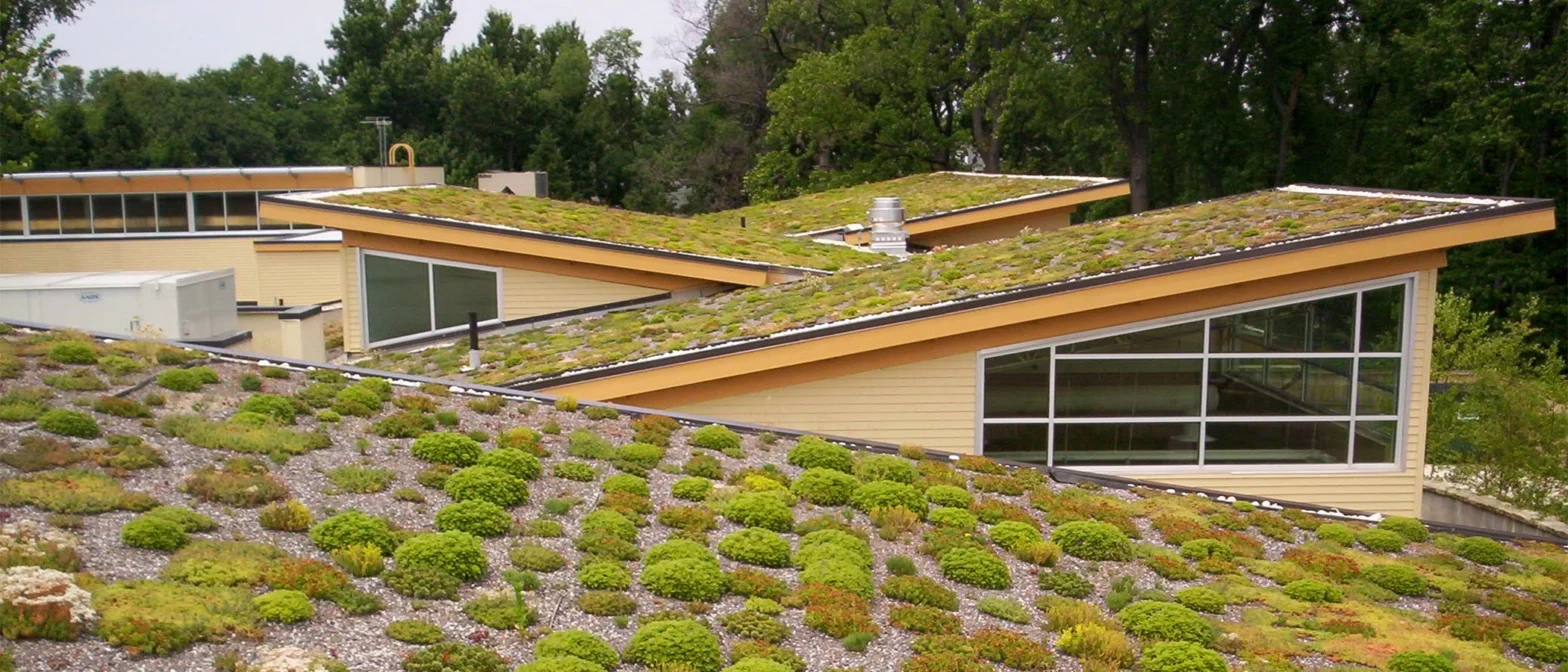Green Roofs and Walls: Natural Barriers Against Climate Extremes
New Heaven Developers July 09, 2025

What Are Green Roofs and Walls?
Green roofs are roof surfaces partially or fully covered with vegetation planted over a waterproof membrane. They may range from simple grass or sedum mats to elaborate gardens with shrubs and even trees. Green walls, also known as living walls or vertical gardens, consist of plants grown on specially designed structures attached to building façades or freestanding frameworks. Both green roofs and walls are engineered to support plant life while providing environmental benefits. They require layers for waterproofing, drainage, and root protection to ensure the building’s structure remains sound and dry.Thermal Regulation Through Vegetation
One of the most important functions of green roofs and walls is thermal regulation. Buildings experience heat gain and loss through their external surfaces, impacting indoor temperatures and energy use for heating or cooling.How Green Roofs Help
Plants and growing media on green roofs act as natural insulators. During hot weather, the vegetation absorbs sunlight and uses it in photosynthesis, reducing heat absorption by the roof surface. The soil and plant layers trap cool air and limit heat conduction into the building below. This phenomenon is often called the evapotranspiration effect, where water evaporating from plants cools the surrounding air. In colder seasons, green roofs provide added insulation, retaining heat within the building. This moderates indoor temperatures year-round, reducing reliance on air conditioning and heating systems. The result is a more comfortable living environment with lower energy bills and a smaller carbon footprint.The Role of Green Walls
Green walls similarly buffer exterior walls from direct sunlight and temperature fluctuations. The layer of plants shields the façade from solar radiation, preventing the wall from heating excessively. On the cooler side, green walls reduce heat loss by creating a sheltered microclimate next to the building envelope. By regulating surface temperatures, green roofs and walls reduce thermal stress on building materials, extending their lifespan and improving structural durability.Stormwater Management Benefits
In regions like Altadena and Palisades, intense storms and heavy rainfall pose significant flooding risks. Traditional roofing and wall systems are impermeable, sending stormwater rapidly to drainage systems and contributing to urban runoff and flood hazards. Green roofs and walls serve as natural sponges that absorb, filter, and slow the flow of rainwater. Here’s how they contribute to effective stormwater management:- Water Retention and Delayed Runoff The soil and plant layers on green roofs retain a substantial portion of rainfall, storing it temporarily and releasing it slowly through evaporation and drainage. This reduces the volume and speed of runoff reaching storm drains, mitigating the risk of flash flooding in urban areas.
- Pollution Filtration As rainwater passes through the vegetation and soil, pollutants such as dust, heavy metals, and airborne contaminants are trapped and filtered. This natural purification process improves the quality of water that eventually enters the groundwater or municipal systems.
Enhancing Building Resilience
The ability of buildings to withstand and recover from climate-related stresses is a key priority for us at New Haven Developers. Green roofs and walls enhance resilience through multiple pathways:- Protection of Building Envelope Green roofs shield roofing materials from ultraviolet radiation, temperature extremes, and mechanical damage. This prolongs the life of roofing membranes and reduces maintenance costs.
- Fire Resistance and Safety Properly designed green roofs can also contribute to fire resistance. Moisture-rich vegetation slows the spread of flames compared to traditional dry roofing materials. However, this requires careful plant selection and maintenance to minimize fire risk.
- Biodiversity and Ecosystem Support By incorporating green roofs and walls, we help restore biodiversity in urban environments. These vegetated surfaces provide habitats for pollinators, birds, and beneficial insects, enhancing ecological health around homes and neighborhoods.
Practical Considerations in Installing Green Roofs and Walls
New Haven Developers approaches green roof and wall installation with a focus on durability, suitability, and homeowner needs.- Structural Support Green roofs add extra weight to buildings, so structural assessment is essential. Our team evaluates load-bearing capacity to ensure safe installation, often recommending lightweight soil substitutes and drought-tolerant plants to minimize weight.
- Plant Selection Selecting the right plants is critical for success. We prioritize native, drought-resistant species that thrive in Southern California’s Mediterranean climate. Succulents, sedums, and grasses are common choices for green roofs due to their low water and maintenance needs.
- Irrigation and Maintenance Efficient irrigation systems, such as drip irrigation, ensure plants receive adequate water without waste. We provide homeowners with guidance on maintenance to keep green roofs and walls healthy, including periodic inspections, weeding, and debris removal.
Environmental and Community Impact
The benefits of green roofs and walls extend beyond individual homes. By promoting widespread adoption, New Haven Developers supports a greener, cooler, and more resilient community in Altadena and Palisades.- Reduced urban heat island effect improves neighbourhood comfort.
- Better stormwater management lowers flood risks across the area.
- Enhanced biodiversity supports local wildlife and plant health.
